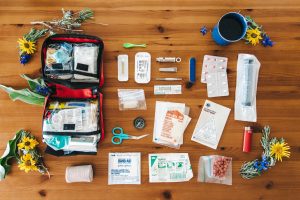Wilderness First Aid: What to Do When Help Is Hours Away

Venturing into remote wilderness settings offers a sense of freedom and tranquility that few environments can match. However, the further you travel from urban resources, the more crucial it becomes to rely on your preparedness. When injuries happen in isolated locations, there is often no cell signal, no quick drive to a hospital, and no certainty that help will arrive quickly. In such moments, knowing to assess injuries, manage pain, and keep someone stable becomes vital. Wilderness first aid isn’t about having fancy tools—it’s about staying calm and capable when circumstances demand immediate action.
Responding to injuries when no help is nearby
- Assessing the Situation Before Acting
The first step in managing any emergency in the wilderness is to pause and observe. Rushing into action without understanding the full scope of the situation can worsen injuries or place others at risk. Start by ensuring that the scene is safe. If the injured person is in an unstable environment like loose rocks, freezing water, or heavy brush, prioritize moving them to safety if possible without causing further harm. Then assess the person’s consciousness, breathing, and visible injuries. A slow, careful evaluation helps determine whether the issue is life-threatening or manageable. It’s easy to panic in these settings, especially if the person in need is someone close, but clarity comes from routine. Practicing mock scenarios and learning to apply care under pressure can build the confidence needed for real situations. Searching for a first aid course near me that focuses on outdoor or wilderness environments can provide the training necessary to make those crucial decisions under stress with greater skill and steadiness.
- Handling Common Wilderness Injuries
Many of the injuries encountered in the wild are the same ones you might see in everyday life, but the consequences can be more severe due to delayed treatment. Sprains, fractures, and cuts are among the most frequent, and each requires immediate attention to prevent further complications. For sprains, immobilizing the joint and reducing swelling with elevation and cold water (if available) helps maintain function. If a fracture is suspected, stabilizing the limb with a splint made from sticks, fabric, or backpacking gear can protect the bone and surrounding tissue during transport. Open wounds must be cleaned as thoroughly as possible using clean water to flush out dirt and bacteria, followed by dressing them with any sterile material. In the absence of medical supplies, creativity becomes an asset. Bandanas, clothing, and even leaves can be transformed into serviceable tools when chosen and used safely. The key is to prioritize hygiene and protect the wound from insect exposure, moisture, and further abrasion.
- Managing Pain and Preventing Shock
Pain in a wilderness setting is more than just discomfort—it’s a barrier to movement, clear thinking, and morale. Treating pain begins with immobilizing the injured area and supporting the person emotionally. Talking calmly, offering water, and helping people control their breathing reduces stress. Over-the-counter pain medication, if carried, should be used within recommended limits, and hydration plays a critical role in keeping the body regulated. More serious is the threat of shock, a life-threatening condition that can arise from trauma, blood loss, or infection. Early signs include pale skin, fast pulse, sweating, and confusion. If you suspect shock, the person should be laid down, feet elevated unless contraindicated, and kept warm. Do not give them anything to eat or drink if they’re not fully alert. Monitor their breathing and mental state consistently. Knowing how to respond to these signals without medical professionals can make the difference between survival and deterioration while waiting for evacuation.
- Building Improvised Tools and Shelter
When you’re deep in the wilderness, your gear may be limited. That’s when basic survival skills complement first aid knowledge. Creating a makeshift stretcher from jackets, rope, and trekking poles can help move someone with minimal strain. If the weather is cold or wet, constructing a temporary shelter from branches, tarps, or even backpacks helps prevent hypothermia, a common threat when someone is immobilized. Fire-building skills also become essential, not just for warmth, but for sterilizing tools or providing visibility. The environment can offer resources if you know how to use them wisely. Soft moss may serve as padding, pine sap as a mild antiseptic, and natural depressions in the landscape can offer wind protection. These improvisations are not replacements for preparation but reflect a mindset that values resourcefulness. Adapting to your surroundings increases your chances of staying safe until help arrives or conditions improve enough to allow safe travel back to civilization.
- Making Evacuation Decisions and Signaling for Help
One of the most complex parts of wilderness first aid is deciding whether to wait for rescue or attempt to self-evacuate. This decision depends on many factors, including the severity of the injury, terrain, weather, and group dynamics. If the injured person can walk, supporting them with trekking poles or a partner’s help may be feasible. However, if movement risks further harm, staying put and signaling for help becomes safer. Signaling techniques include mirrors, whistles, brightly colored clothing, or arranging rocks or logs into attention-getting shapes. At night, a flashlight or fire can serve as a beacon. If a personal locator beacon or satellite messenger is available, activating it gives rescuers your location and alerts them to an emergency. Regardless of the method, staying calm and rotating watch duties ensures someone is always ready to flag down passing aircraft or hikers. Evacuation and signaling are about strategy and patience—acting too soon or without a clear plan can worsen an already delicate situation.
Wilderness first aid is more than applying bandages or splinting limbs—it’s about thinking, using what you have, and caring for others in a challenging environment. When professional help is hours or even days away, your knowledge, preparation, and ability to remain calm can save a life. Each decision you make, from assessing injuries to building a shelter or managing shock, shapes the outcome of the emergency. Training and practice create the foundation for these skills, but adaptability and composure carry them through when conditions are rough. Whether hiking, camping, or exploring new terrain, the wilderness demands respect and readiness. And with the right mindset, even the most remote places can be navigated safely.






